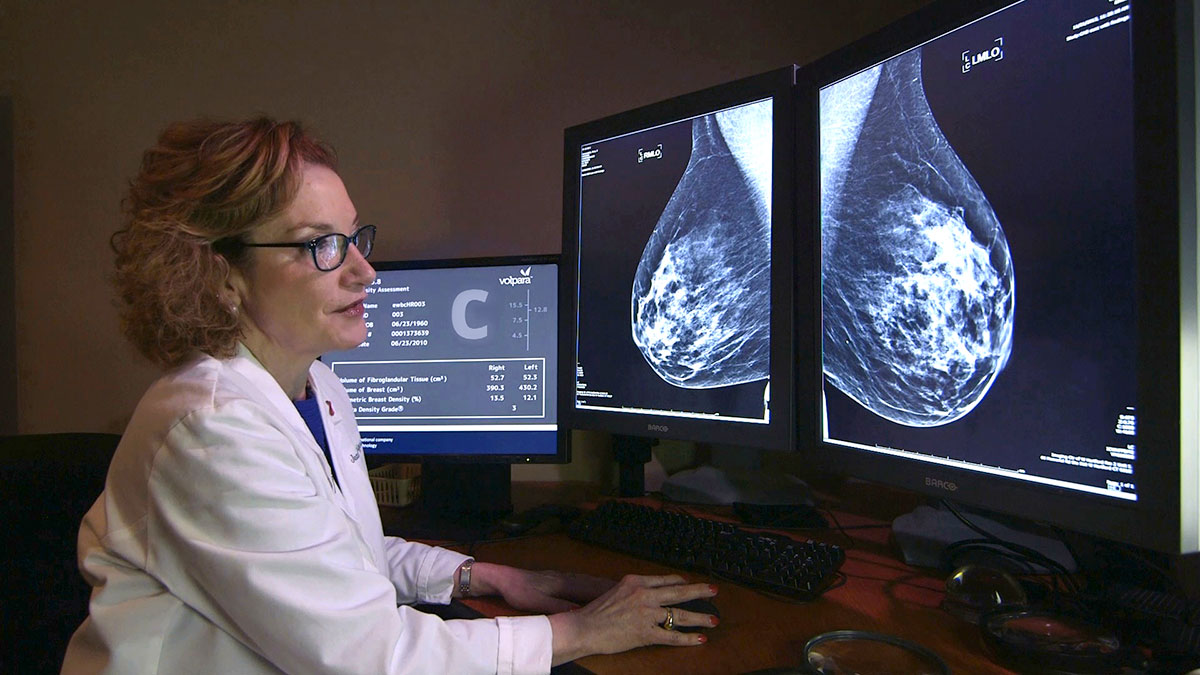This mathematician is changing the face of breast cancer screening

Pic: Godji10 / iStock / Getty Images Plus via Getty Images
When Dr Ralph Highnam, a mathematician, came up with a way for computers to analyse and measure breast density at Oxford University in the 1990s, he was ahead of most doctors.
Breast density is today widely accepted by authorities — including BreastScreen Australia — to be linked to a higher risk of cancer and increased difficulty detecting it with mammograms.
But back then, it was a different story.
“The first pieces about breast density were published in the 1970s by a guy called John Wolfe,” Dr Highnam told Stockhead.
“Dr Wolfe published some papers that said women with very highly-dense breasts were 30 per cent more likely to develop breast cancer than women with fatty breasts. In retrospect, he was completely visionary in realising the link.”
However Dr Wolfe’s work proved hard to replicate and wasn’t believed by other academics for years.
“On the one hand, he discovered the link, but on the other, his paper was so optimistic about it that when people couldn’t reproduce the results the whole area fell into disrepute,” Dr Highnam said.
“It’s taken decades, really, to undo that.”
One of the people responsible for changing the industry’s opinion was Dr Norman Boyd, who picked up where Dr Wolfe left off and found a better way to measure breast density.
“He went on to publish hundreds of papers proving the link,” Dr Highnam said.
Another was Dr Highnam himself, who pioneered the automation of the process with computer software as part of his PhD in Engineering Science at Oxford.
From theory to market
Dr Highnam is now the CEO of Volpara Health Technologies (ASX:VHT), which has a range of software products designed to improve the breast cancer screening process.
Volpara’s first product was a service that analysed mammogram results and sent breast density measurements back to the clinic, which was embraced by the industry.
“That’s in 36 countries around the world, so it’s proven to be very robust,” Dr Highnam said.

The importance of accurate density readings is so that women with high breast density can be given the choice to have additional cancer checks, such as by ultrasound or MRI, on top of a mammogram.
“Most assessment of breast density is done visually, which effectively means you look at an X-ray and you try to judge the amount of white tissue in the X-ray, which is the glandular tissue,” Dr Highnam said.
“In the last few years there have been a number of studies that show that visual assessment is incredibly subjective.”
However Volpara’s system still failed occasionally when the quality of the X-ray image was poor. That problem led to the company’s next big mission — to improve the entire screening process.
“Our software now is on-site and quantifies breast density and breast compression, as well as how good the image is and how much radiation the breast received,” Dr Highnam said.
“That data flows into the cloud and a chief technologist can now log into the cloud and see exactly what their enterprise is doing, for example do they have a machine that is putting high doses (of radiation) out, or do they have a technologist doing poor imaging.”
The new cloud-based product, called VolparaEnterprise, was launched in August last year and is being used by about 20 clinics so far. It has analysed more than 1 million images from those clinics.
Dr Highnam said the medical industry had traditionally been wary of using cloud products, but that was starting to change.
“It hasn’t been a huge issue for us, but it has slowed down progress,” he said.
What the authorities say
BreastScreen Australia, which runs a national mammography screening program for women aged 50 to 74, issued a formal position statement on breast density last year.
The organisation said density could play a role in determining the best kind of breast screening methods for individuals in the future, but more evidence was needed before it would incorporate it into its program.
“While computer software analysis can measure each mammogram, it has not yet been proven to consistently measure each woman’s breast density from one screening mammogram to the next,” it said.
“For women assessed as having dense breasts, receipt of inaccurate breast density information may create undue anxiety about their risk and worry that mammography may have missed a breast cancer.
“For women with fatty breasts (low breast density), it may convey a false sense of security.”
At the time, the organisation decided not to record density as part of its screening program or provide additional screening methods for women with dense breasts.
Volpara shares have traded between 30c and 87c over the past 12 months. The company spent $1.64 million in the quarter to June, leaving $11.2 million in cash. It expects to spend another $2.97 in the current quarter.
UNLOCK INSIGHTS
Discover the untold stories of emerging ASX stocks.
Daily news and expert analysis, it's free to subscribe.
By proceeding, you confirm you understand that we handle personal information in accordance with our Privacy Policy.








